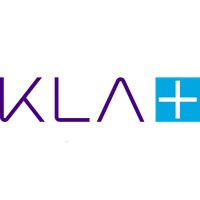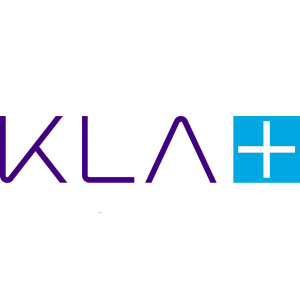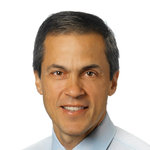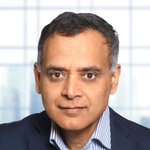
KLA Corp
NASDAQ:KLAC

KLA Corp



KLA Corporation, headquartered in Milpitas, California, is a critical player in the semiconductor industry, often flying under the radar compared to some of its more illustrious peers. The company's story begins with its pioneering role in process control, inspection, and metrology, vital components in the semiconductor manufacturing process. KLA’s innovative technologies enable semiconductor manufacturers to produce flawless chips by identifying defects and optimizing production yields. By providing sophisticated equipment and software, KLA ensures that every chip, whether powering a smartphone or a supercomputer, meets the highest standards of quality and performance. Through this, the company has carved out a niche, creating a steady flow of revenue from the ever-growing demand for more powerful and efficient semiconductor devices.
The financial symphony of KLA is orchestrated through its blend of product sales and lucrative service agreements. Its product sales are primarily driven by the delivery of its high-precision tools that are indispensable to chip manufacturers keen on maintaining competitive parity. Meanwhile, its service arm sustains long-term relationships with these manufacturers. By offering ongoing maintenance and optimization services, KLA not only ensures the longevity and peak performance of its equipment but also secures a predictable stream of recurring revenue. This dual-source revenue model allows KLA to thrive even amidst the highly cyclical nature of the semiconductor industry, reinforcing its position as an indispensable cog in the high-tech manufacturing machine.
Earnings Calls
Management

Richard P. Wallace is a prominent figure in the semiconductor equipment industry, most notably associated with KLA Corporation, a leading provider of process control and yield management solutions for the semiconductor and related nanoelectronics industries. Wallace became the CEO of KLA Corp in January 2006 and has been a pivotal leader in driving the company's growth and innovation. Wallace joined KLA in 1988, and over the years, he held various positions in engineering, applications development, and product marketing. His deep industry knowledge and experience enabled him to rise through the ranks. As CEO, Richard Wallace has been credited with steering KLA through significant industry changes and expanding the company's presence in the global market. Under his leadership, KLA has focused on technological advancement and strategic acquisitions, maintaining its position as a market leader. He holds a Bachelor of Science degree in Electrical Engineering from the University of Michigan and has participated in the Stanford Executive Program. Outside of his corporate role, Wallace is involved in various industry initiatives and has served on boards and councils contributing to the advancement of semiconductor technology and policy.
Bren D. Higgins is an executive known for his tenure at KLA Corporation, a leading provider of process control and yield management solutions in the semiconductor industry. His role as the Chief Financial Officer (CFO) involves overseeing the company's financial strategy, management, and operations. Higgins has played a significant role in KLA’s financial planning, analysis, and investor relations, contributing to its growth and stability. With a strong background in finance and management, his leadership is integral to maintaining KLA’s competitive edge in the technology sector.
Ahmad A. Khan is an accomplished executive known for his leadership roles within the semiconductor industry. He serves as the President of the Semiconductor Process Control segment at KLA Corporation, a leading provider of process control and yield management solutions for the semiconductor and related nanoelectronics industries. Khan has a rich background in engineering and management, having held several key positions within KLA. He was instrumental in driving innovation and strategic direction for the company's product lines, focusing on developing solutions that enhance semiconductor manufacturing processes. His expertise is not limited to just technical advancements; he is also known for fostering strong customer relationships and advancing KLA's market position globally. Under his leadership, KLA has continued to broaden its technological footprint, ensuring that their offerings align with industry trends and customer needs. Khan's career is marked by a commitment to excellence, both in operational execution and strategic vision, which has significantly contributed to KLA's success. His role is pivotal in steering the company through the evolving landscape of the semiconductor industry.
Brian W. Lorig is an executive at KLA Corporation, a company that is a leading supplier of process control and yield management solutions for the semiconductor and related nanoelectronics industries. Brian Lorig serves as the Executive Vice President and Chief Operating Officer (COO) at KLA. In his role, he is responsible for overseeing the company’s global operations, driving strategic initiatives, and ensuring operational excellence. Lorig has a significant background in leadership roles within the company, contributing to its growth and performance. His insights and leadership have been instrumental in advancing KLA's mission to provide innovative solutions to its customers.

Oreste Donzella is a notable executive at KLA Corporation, a leading supplier in the semiconductor industry. As of his latest known role, Donzella serves as the Executive Vice President of the Electronics, Packaging, and Components (EPC) Group. He has been with KLA for several years, contributing significantly to the company's growth strategy and technological advancements. With an extensive background in engineering and management, Donzella plays a crucial role in driving the innovation and development of KLA's EPC business, focusing on electronics and advanced packaging industries. His leadership is pivotal in sustaining the company's market position and exploring new business opportunities. Donzella is recognized for his strategic vision and capability to lead cross-functional teams, helping to navigate complex global markets and meet customer demands. His expertise aids KLA in continuing to develop cutting-edge solutions for their clients, thereby reinforcing the company's reputation as a leader in process control and yield management systems for the semiconductor industry.

Dr. Ben Bin-Ming Tsai previously served as the Chief Technology Officer (CTO) and Executive Vice President of Global Products at KLA Corporation, a leading provider of process control and yield management solutions for the semiconductor and related nanoelectronics industries. In his role as CTO, Dr. Tsai was responsible for advancing KLA's technology and product development, guiding the company's innovation strategy across its broad spectrum of product lines. Dr. Tsai has an extensive background in the semiconductor industry, holding various leadership roles throughout his career at KLA. His work contributed significantly to the development of key technologies and innovations that have supported the company's growth and leadership in the market. Dr. Tsai's efforts in enhancing KLA's product portfolio have played a crucial role in addressing the evolving needs of semiconductor manufacturing processes. Before his tenure at KLA, Dr. Tsai earned his Ph.D. in physics, which equipped him with a strong foundation in the technical knowledge critical to his subsequent innovations and leadership within the industry. His academic and professional achievements underscore his influence in driving technological advancements in semiconductor manufacturing.
Kevin M. Kessel, C.F.A., is an accomplished executive known for his extensive expertise in finance and investor relations. He currently serves as the Vice President of Investor Relations at KLA Corporation, a leading supplier in the semiconductor industry. In his role, Mr. Kessel is responsible for managing communications between the company's leadership, its investors, and the broader financial community. Before joining KLA, Kevin M. Kessel has garnered substantial experience in investor relations and finance, having worked with various notable companies where he successfully led strategies that enhanced shareholder value and improved corporate communications. His strong analytical skills and deep understanding of financial markets have distinguished him as a key figure in investor relations. As a Chartered Financial Analyst (C.F.A.), he upholds the highest standards of ethical and professional conduct in his field.
Mary Beth Wilkinson is a notable executive at KLA Corporation, where she serves as the Executive Vice President and Chief Legal Officer. In her role, Wilkinson is responsible for overseeing the company's global legal matters, ethics and compliance, intellectual property, and government affairs. With a rich background in legal and corporate governance, she brings extensive expertise in guiding legal strategy and ensuring compliance with regulatory requirements. Before joining KLA, Wilkinson held significant legal positions at other technology and manufacturing companies, which equipped her with a deep understanding of the complexities involved in multinational operations. Her leadership and proficiency make her a key member of the KLA executive team, contributing to the company's growth and strategic initiatives.
Randi Polanich is a prominent executive at KLA Corporation, a leading provider of process control and yield management solutions for the semiconductor and related industries. At KLA, she serves as the Executive Vice President of Global Human Resources. In her role, Polanich is responsible for leading the company's human resources strategy and operations worldwide. She plays a crucial role in shaping KLA's workforce culture, talent acquisition, development, and management efforts, ensuring they align with the company’s growth objectives and organizational values. Randi Polanich has a significant track record in the field, bringing extensive experience in HR leadership across various sectors. Her work focuses on fostering a supportive and innovative environment that enables employees to thrive and contribute effectively to the company's success. Her leadership in human resources underscores KLA's commitment to nurturing talent and maintaining competitive advantage through a people-centric approach.
















































 You don't have any saved screeners yet
You don't have any saved screeners yet
